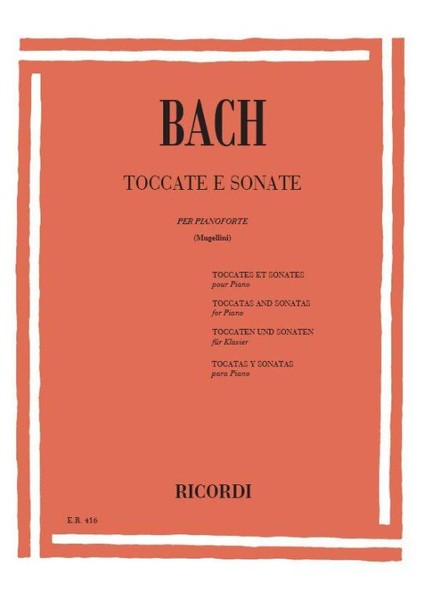Description
Johannes Brahms: Sinfonie No. 4
Product Information
- UPC: PR00061100
- Product Type: Orchestral Score
- Genre: Classical Music
- Setting: Orchestra
- Publication Date: 1984
- Publisher: Ricordi
- ISMN: 9790041906119 / 979-0041906119
Overview
Johannes Brahms’s Symphony No. 4 in E minor, Op. 98, composed in 1885, stands as the culminating achievement of his symphonic output and one of the most profound and intellectually rich works of the Romantic era. This symphony marks the final chapter in Brahms's symphonic journey, following three earlier works that had already secured his place among the greatest composers in the tradition of Beethoven and Schumann.
The Fourth Symphony is admired for its depth of emotion, structural ingenuity, and sophisticated craftsmanship. From the opening theme of the first movement—constructed with a chain of falling thirds—to the majestic passacaglia of the finale, Brahms constructs a sonic architecture that is both monumental and intimate. The second movement offers a meditative lyricism, while the scherzo bursts with energy and rhythmic vitality. What truly sets this symphony apart is the fourth movement, a passacaglia—a form rooted in Baroque tradition, consisting of variations over a repeating bass line. Here, Brahms crafts 30 variations on a theme inspired by J.S. Bach’s Cantata No. 150, integrating ancient form with Romantic expression. The result is a dazzling display of contrapuntal mastery, thematic unity, and emotional intensity. Premiered under Brahms’s own baton in Meiningen in October 1885, the symphony received mixed reactions at first but quickly rose to be considered a masterpiece. Today, it is hailed as a summit of the symphonic repertoire, a work that combines the intellectual rigor of classical form with the emotional expressiveness of the Romantic spirit.
Italian Translation - Overview
La Sinfonia n. 4 in mi minore, Op. 98 di Johannes Brahms, completata nel 1885, rappresenta l’ultima e forse la più intensa delle sue sinfonie. Considerata uno dei vertici assoluti del repertorio sinfonico, quest’opera unisce una straordinaria complessità formale a una profonda carica emotiva, testimoniando la maturità artistica del compositore tedesco.
Già dalle prime battute del primo movimento, costruito su una catena di terze discendenti, si percepisce la raffinatezza armonica e la coesione tematica tipica di Brahms. Il secondo movimento si distingue per la sua serena contemplazione lirica, mentre lo scherzo – terzo movimento – rompe la tensione con una vivace energia ritmica. Il movimento finale è il punto culminante dell’intera sinfonia: una passacaglia formata da 30 variazioni su un tema ispirato alla Cantata n. 150 di Johann Sebastian Bach. Qui, Brahms dimostra una straordinaria padronanza della tecnica contrappuntistica e una capacità unica di fondere forme antiche con il linguaggio espressivo romantico. Presentata per la prima volta a Meiningen nell’ottobre del 1885, diretta dallo stesso Brahms, la sinfonia inizialmente ricevette reazioni contrastanti. Col tempo, però, è stata riconosciuta come una delle opere sinfoniche più significative dell’Ottocento, esemplare per il modo in cui unisce rigore formale e intensità espressiva.
Product Features
- Format: Orchestral score
- Length: Approximately 200 pages
- Weight: 0.794 kg
- Genre: Classical orchestral work
- Difficulty Level: Grade 5, suitable for advanced performers
Interesting Facts
- Historical Context: Brahms began working on the Fourth Symphony in 1884, shortly after completing his Third Symphony. It reflects his deep engagement with the symphonic tradition while also pushing the boundaries of the form.
- Musical Structure: The symphony consists of four movements, with the final movement being particularly notable for its use of variations based on a theme from J.S. Bach, showcasing Brahms's reverence for the past.
- Cultural Impact: The Fourth Symphony has had a lasting influence on the symphonic repertoire and is frequently performed by orchestras around the world, celebrated for its emotional depth and structural complexity.
Italian Translation - Interesting Facts
-
Contesto storico: Brahms iniziò a lavorare alla Quarta Sinfonia nel 1884, poco dopo aver completato la Terza. L'opera riflette il suo profondo impegno con la tradizione sinfonica, pur spingendosi oltre i confini della forma.
- Struttura musicale: La sinfonia è composta da quattro movimenti, con l’ultimo particolarmente degno di nota per l’uso di variazioni su un tema di J.S. Bach, a testimonianza della profonda ammirazione di Brahms per il passato.
- Impatto culturale: La Quarta Sinfonia ha esercitato un’influenza duratura sul repertorio sinfonico ed è frequentemente eseguita dalle orchestre di tutto il mondo, apprezzata per la sua profondità emotiva e la sua complessità strutturale.
Publishers
Published by Ricordi. All rights reserved under catalog number PR00061100 and ISMN 9790041906119 / 979-0041906119.
We value your feedback! Share your experience with this product to help others make informed decisions. Your review is important to us!
Hashtags
English:
#JohannesBrahms #SymphonyNo4 #ClassicalMusic #OrchestralMusic #Ricordi



















